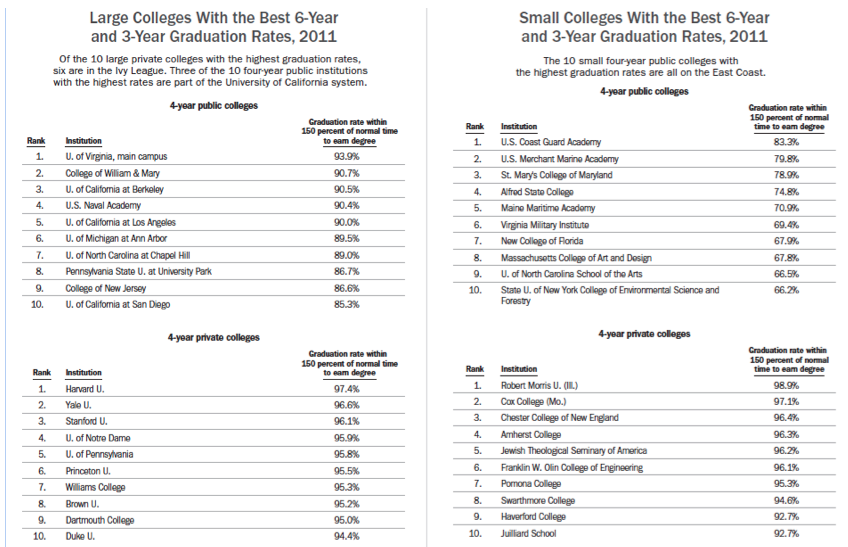When considering colleges, students look at many factors – location, size, academic programs, athletic spirit, and financial aid packages. One important factor that often gets overlooked, however, is how long it takes students to graduate. It may not be obvious, but a college’s 4-year and 6-year completion rates can actually tell you quite a bit about the school.
Students Take Longer to Graduate
Let’s take a step back. Undergraduate education is traditionally thought of as a four-year experience; most people assume that, barring some sort of dramatic, unforeseen circumstance, students will complete their programs of study on time. The reality, however, is that many students, particularly at public universities, actually take five, six or even more years to attain a degree. According to the National Center for Education Statistics, 41% of students who enter college each year graduate within four years, while nearly 60% of students graduate in six years. At public schools, it’s even more common for students to take longer than 4 years to graduate.
And in recent years, the average length of time to graduate has been increasing. A recent study by the National Bureau of Economic Research (abstract available here), cites a number of reasons, including decreases in collegiate resources, which in turn lead to reductions in course offerings needed for degree progress and increased competition for spots in required courses. Additionally, high tuition costs may lead students to work part- or even full-time, thereby reducing their ability to take the full course-loads necessary to graduate on schedule.
That average, however, reflects a huge range of completion rates, with the highest performing schools often graduating about 90 percent of their first-time, full-time students in 4 years (see chart below). On the other end of the spectrum, some schools report percentages in the thirties or below.
Schools with the Best Completion Rates
The reasons for this discrepancy have to do with schools themselves. Here’s a look at the 4-year colleges with the highest completion rates, according to data from the Chronicle of Education’s Almanac of Higher Education:
The first thing you might notice is that these colleges tend to be among the best and most selective institutions in the country. This is consistent with recent data from US News and World Report. Of the 10 schools with the highest four-year graduation rates, all but one appeared in the top 25 in either the Best National Universities or Best National Liberal Arts Colleges rankings:
These colleges, however, have more in common than their prestige. They are all private, and have a smaller student population as well as smaller undergraduate classes. In fact, seven of the top 10 are “national liberal arts colleges,” and have total student enrollment ranging from 1200 to 3000, with the other three in the medium-sized range of 5,000-7,000. Not only does this make it more likely that students will be able to register for courses necessary to earn their degrees, smaller class sizes also allow for more personal attention from faculty and administrators, which can help students stay the course. Moreover, many of these colleges offer some of the best financial aid packages, meaning that students are more likely to be able to afford tuition without having to lighten course loads or take time off from their studies to work.
On the other hand, the nation’s largest universities, which tend to be public, state-supported institutions, do not perform nearly so well. According to the article, Arizona State University and the University of Central Florida, which have among the largest undergraduate student bodies, also have some of the worst completion rates: only 33.5 percent of Arizona State’s first-time, full-time students graduated within four years. Central Florida reported 35.3 percent.
Choosing the right college is an enormously important, and deeply complex decision. For more information or guidance, contact Collegiate Gateway. As always, we’re happy to help.


